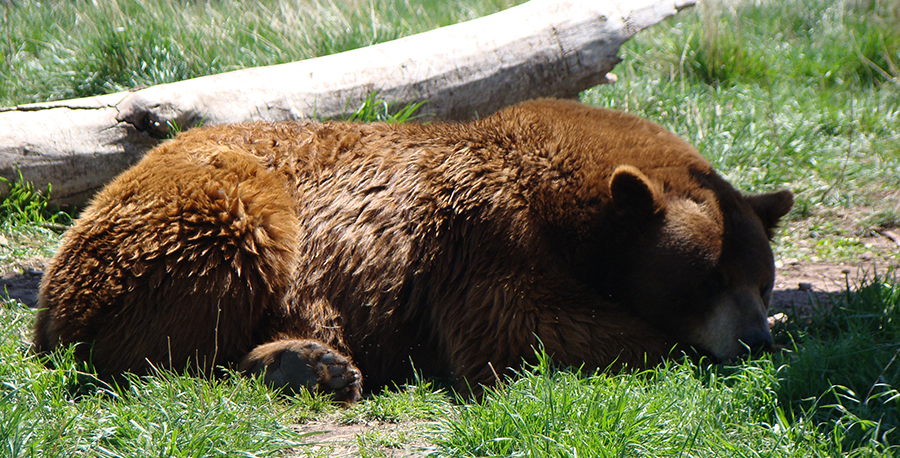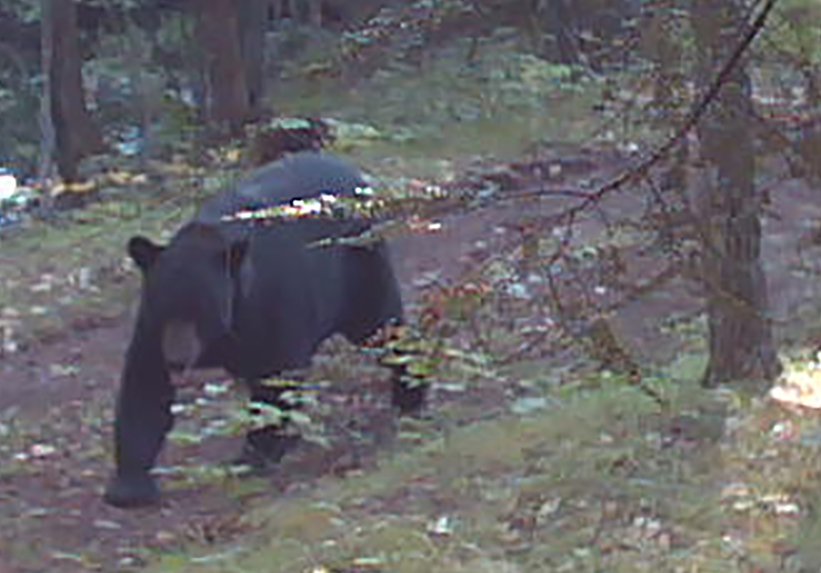Basic Black Bear Body, Behavioral & Additional Facts
In addition to their great strength…
1) Black bears can do a lot with their front paws and claws. They can open screw-top jars and can open door latches.

Mike Brust, a friend of the authors, told us about a bear eating the suet from suet cages in his back yard in Wausau, Wisconsin. The suet was intended for birds, of course, and was in small wire cages that snap closed and are held to a back-plate by a couple of light metal tabs.
“Rose (his wife) watched a big bear eat the suet out of the suet feeder and then walk almost under our deck before sitting down. This bear had worked with suet feeders before.
“Other bears have ripped the suet cages off the back-plate and torn apart the cages. Not this guy. We have some big pileated woodpeckers that use the suet feeder and, because of their size, their weight can open the cages. So Rose twist-ties the cages shut. This bear somehow removes the twist-ties and opens the cage doors without pulling the cages from the back-plates – and without having opposing thumbs.”
Imagine what it could do with opposing thumbs like we have.
2) They’re not as big as we generally think. They generally stand just over two feet to three feet at the shoulders.
3) They can run 25–30 mph, faster than a horse for a short distance.
4) Bears on the East Coast and Midwest tend to average heavier than those on the West Coast.
5) Black bears have good eyesight and have been proven experimentally to be able to learn visual discrimination tasks based on color faster than chimpanzees and as fast as dogs.
6) Black bears are strong swimmers, doing so to get from here to there and to feed (mostly on fish). They appear to enjoy swimming.
7) Black bears may be active at any time of day or night, but mainly feed at night.

Black Bear Weight
8) Adult males typically weigh 150–550 pounds, with 190-225 pounds a good average; females average 33% less, at 120-150 pounds.
9) All 16 black bear sub-species follow Bergmann’s Rule — a principle that states that within a broadly distributed group of organisms believed to have evolved from a common ancestor — species of larger size are found in colder environments, and species of smaller size are found in warmer regions.
10) The heaviest wild black bear ever recorded was a male from New Brunswick, shot in November 1972, that weighed 902 pounds after field dressing. Estimated live weight was 1,100 pounds. It measured 7.9 feet long. (In other words, it was like a good-sized grizzly bear.)
11) Another notable wild black bear, live weight of 899 pounds, was the cattle-killer shot in 1921 on the Moqui Reservation in Arizona.
12) The heaviest bear from New Jersey was shot in 2011 and weighed 830 pounds. (And their governor wants to ban bear hunting in the state!?)
13) A Pennsylvania bear taken in 2010 weighed 880 pounds.
14) There are extremes both larger and smaller. A friend killed a mature brown phase black bear in Ontario with a live weight of 135 pounds. The bear was aged at 16 years old.
15) The bear Bill Wiesner killed in Wisconsin in 2014, the heaviest one he took of the 57 bears he shot, was in the mid-500-pound range and was only seven years old.
This information is an excerpt from a chapter of The Bear Hunting Obsession of a Driven Man, by Bill Wiesner. The book has 10 in-depth how-to chapters on black bears and black bear scouting, hunting and processing, plus 10 entertaining “memoir” chapters on black bear hunting incidents and the people who hunt them. For forty years “Bear Crazy” Bill ate, slept, thought, dreamed – and acted upon – hunting black bear. He tagged 57. Bill and his family (wife Sandy and sons Brad and Bryan) have taken more than 100 bears over baits, by spot-and-stalk, and behind hounds. They have taken bears with rifle, shotgun with slugs, crossbow, selfbow (homemade), recurve bow, longbow, compound bow and muzzleloader. Wiesner knew bears and bear hunting.

